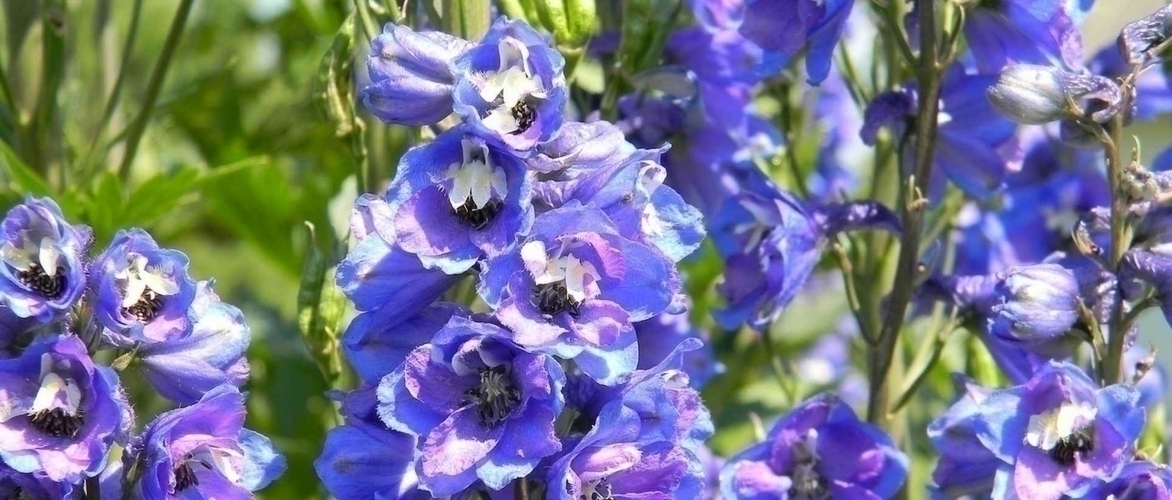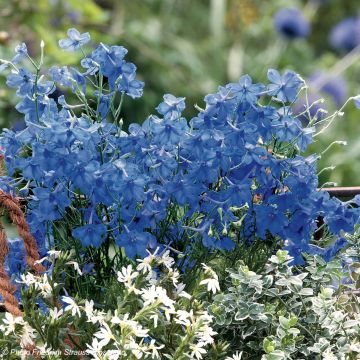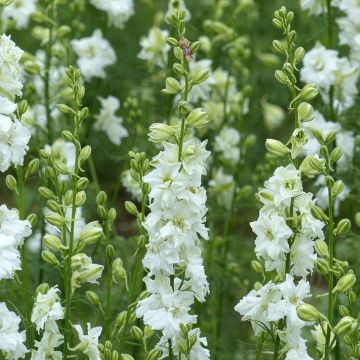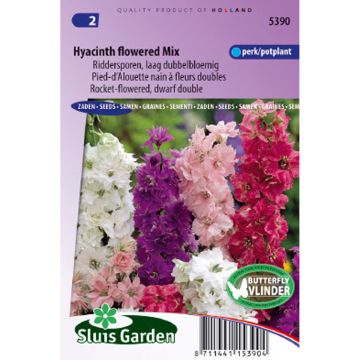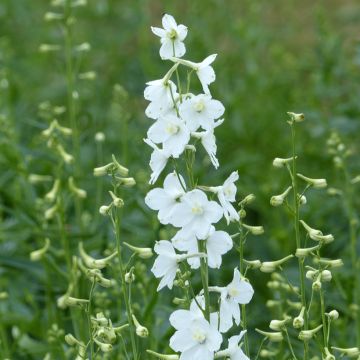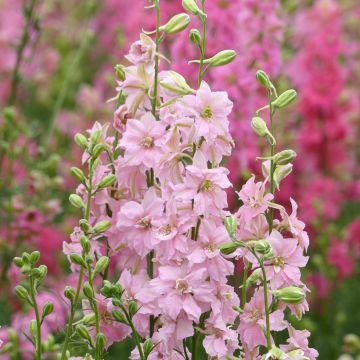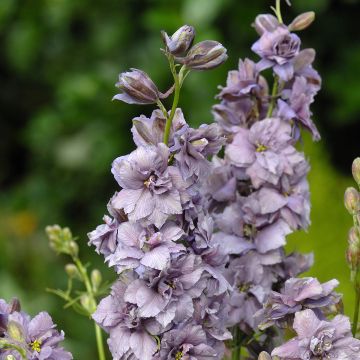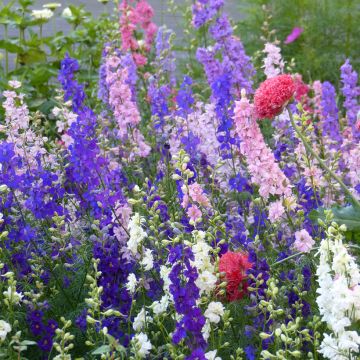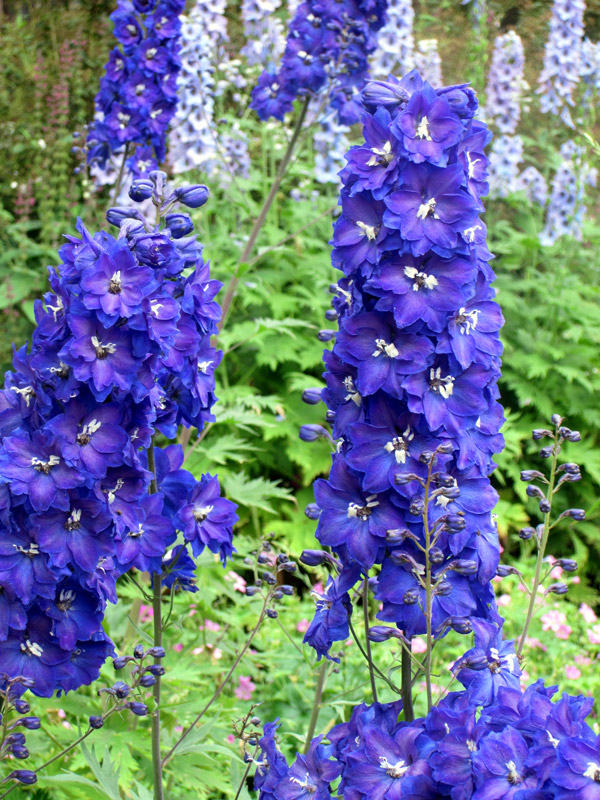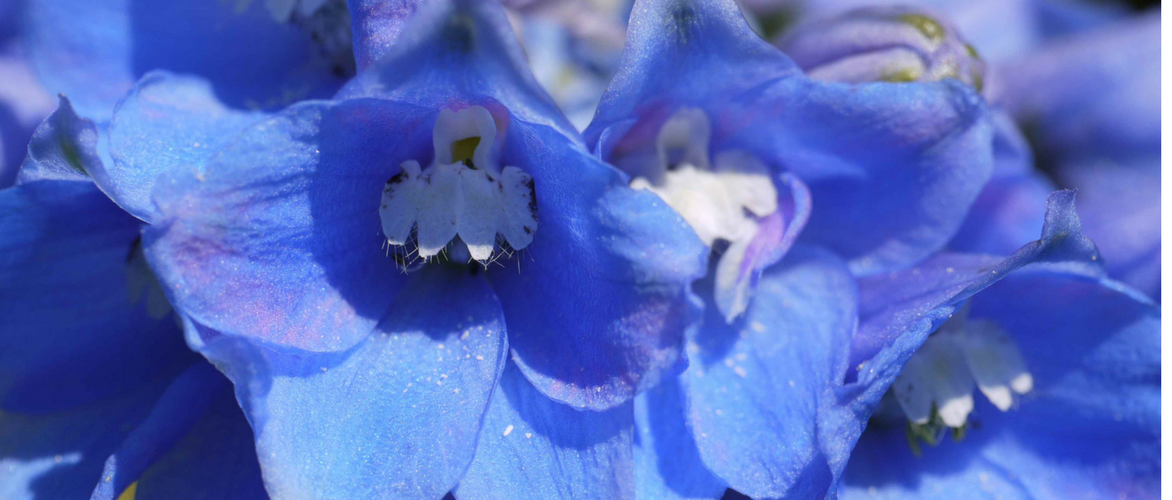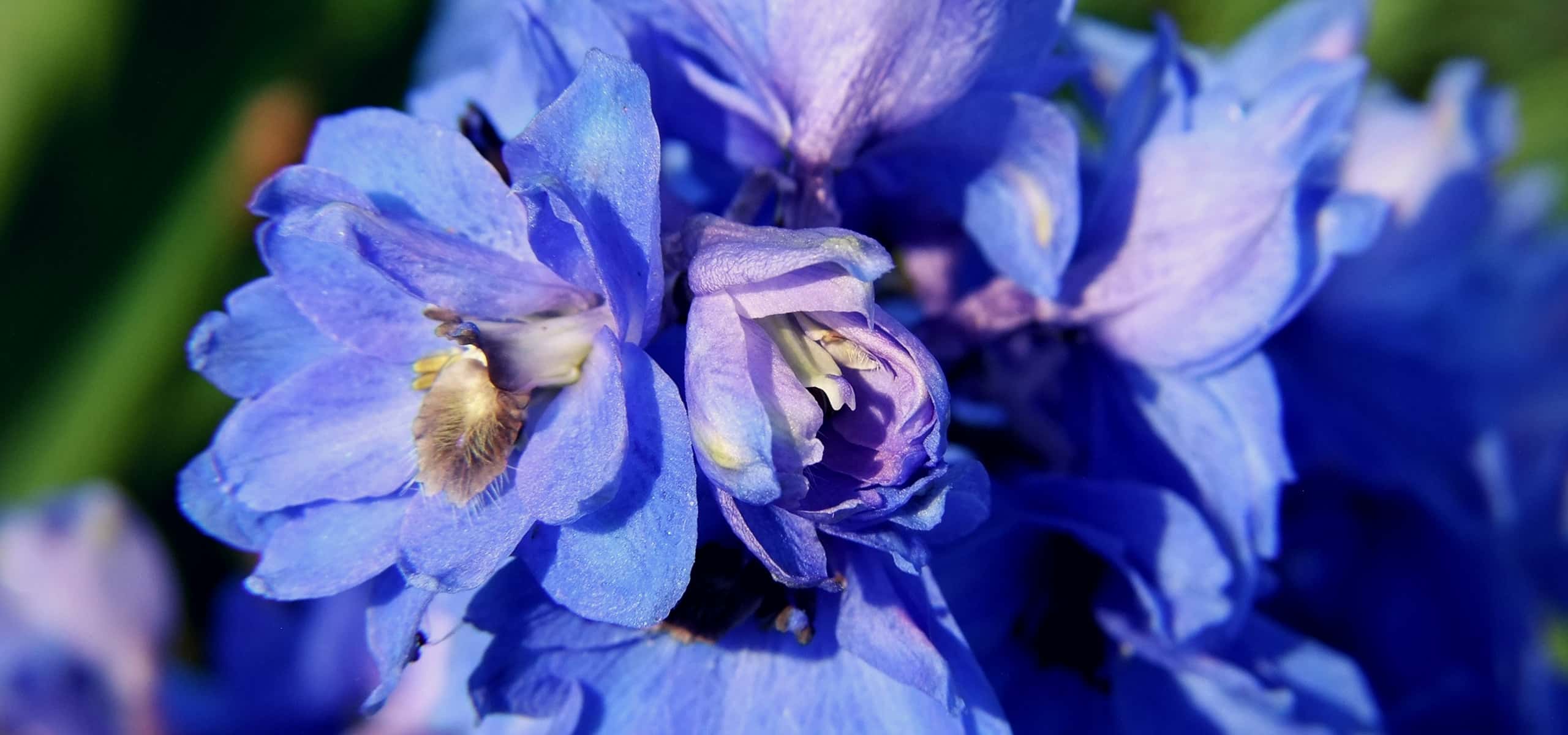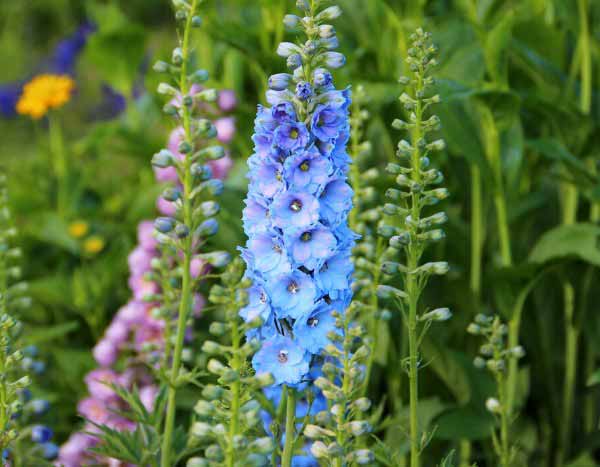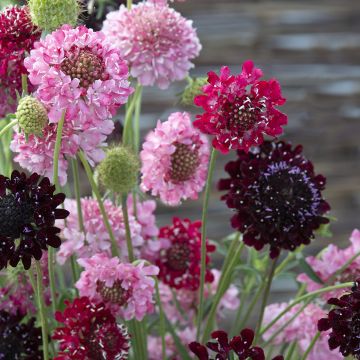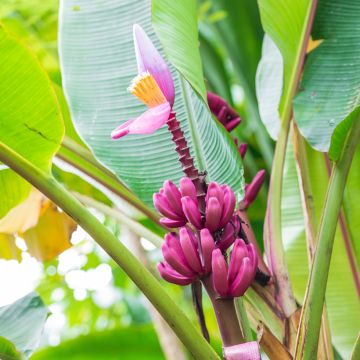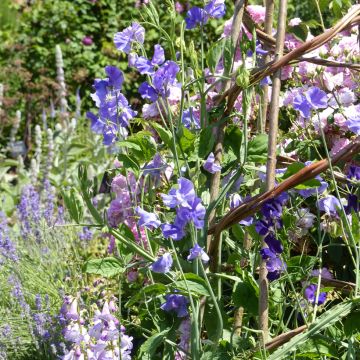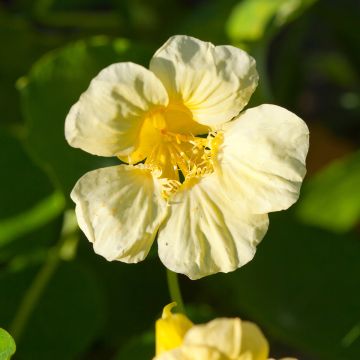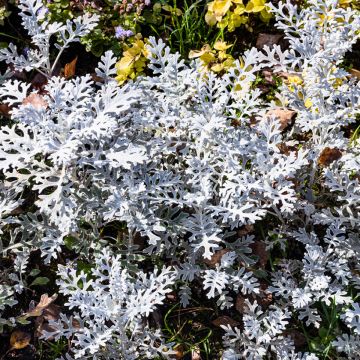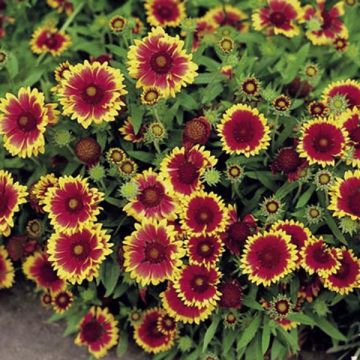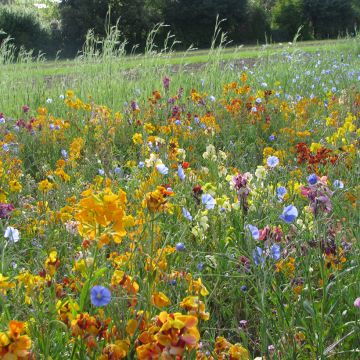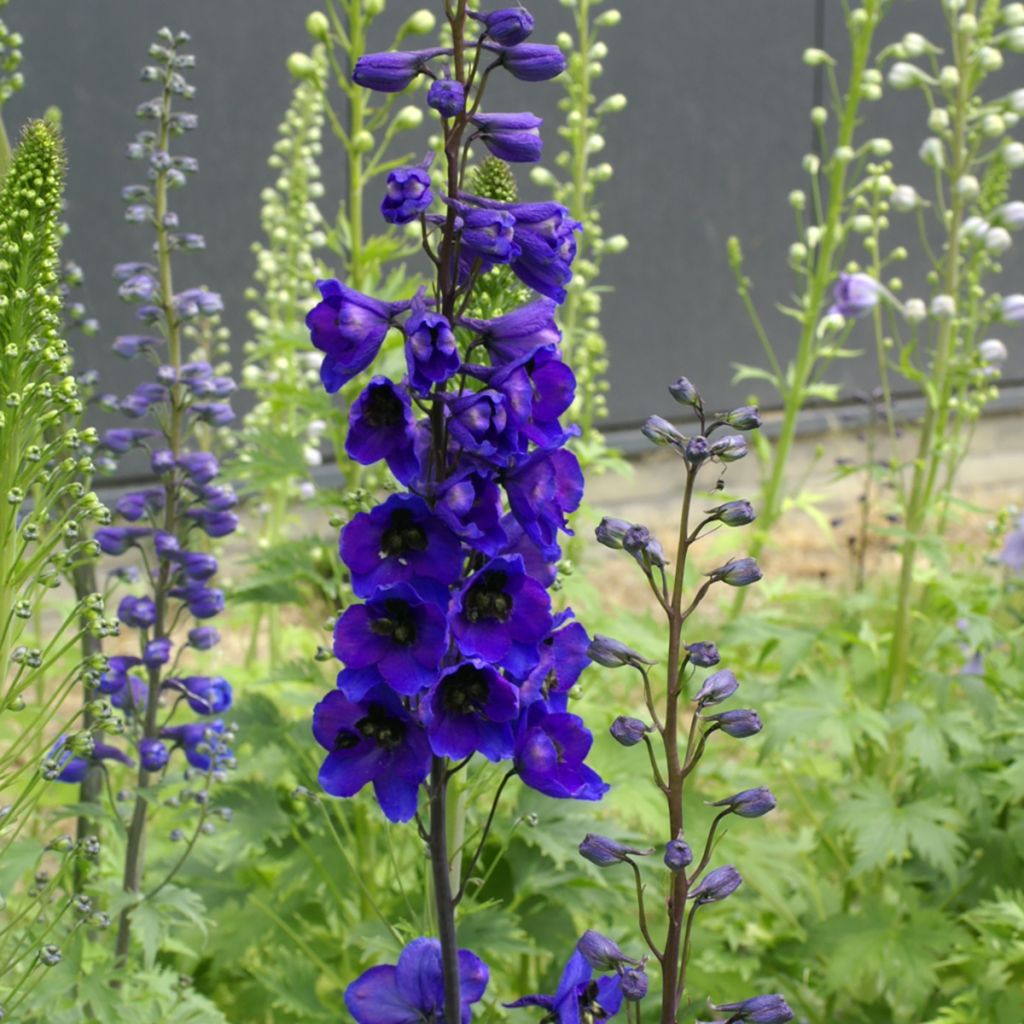

Graines de Delphinium Black Knight - Pied d'alouette vivace
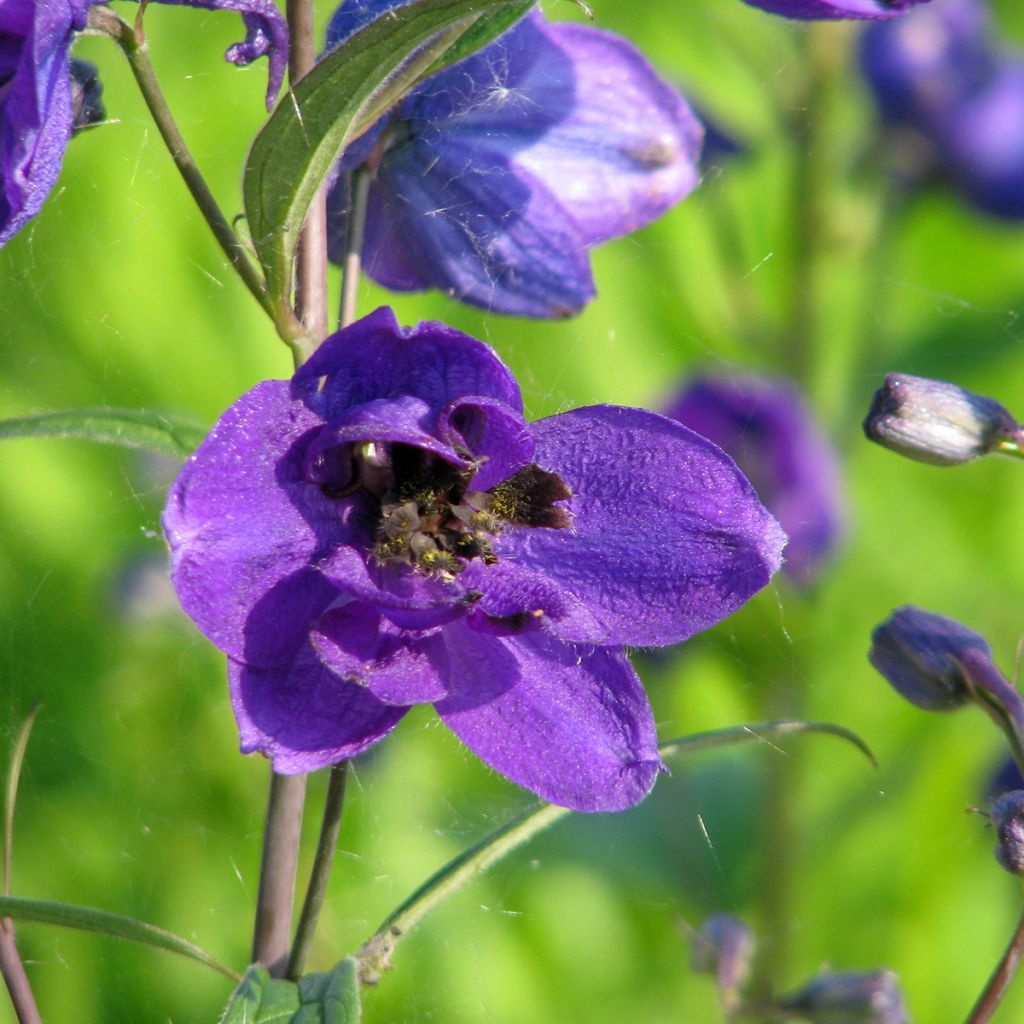

Graines de Delphinium Black Knight - Pied d'alouette vivace
Delphinium Tall Black Knight - Larkspur seeds
Delphinium x cultorum Tall Black Knight
Larkspur, Hybrid Larkspur
Hello, out of a theoretical capacity of 100 seeds, 6 have germinated, which is a success rate of 6%! Disappointing!
Christophe, 17/09/2019
Special offer!
Receive a €20 voucher for any order over €90 (excluding delivery costs, credit notes, and plastic-free options)!
1- Add your favorite plants to your cart.
2- Once you have reached €90, confirm your order (you can even choose the delivery date!).
3- As soon as your order is shipped, you will receive an email containing your voucher code, valid for 3 months (90 days).
Your voucher is unique and can only be used once, for any order with a minimum value of €20, excluding delivery costs.
Can be combined with other current offers, non-divisible and non-refundable.
Home or relay delivery (depending on size and destination)
Schedule delivery date,
and select date in basket
This plant carries a 6 months recovery warranty
More information
We guarantee the quality of our plants for a full growing cycle, and will replace at our expense any plant that fails to recover under normal climatic and planting conditions.
Would this plant suit my garden?
Set up your Plantfit profile →
Description
Delphinium Tall Black Knight is a tall perennial variety with large sturdy spikes covered with dark violet-blue flowers with a black collar at the centre in summer. Magnificent and spectacular in the back of borders, in containers, in pots near the house, or as a cut flower. These larkspurs thrive in sunny, rich, deep, and well-drained soils.
Delphinium 'Tall Black Knight' is one of many hybrids obtained through the cross-breeding of D. elatum, which gave rise, among others, to the famous "Pacific Giant" series. It is a large herbaceous perennial plant with a short lifespan but rapid growth. It forms a clump of deeply cut palmate, tender green leaves, from which floral stems ranging from 1.20m (4ft) to 1.50m (5ft) high emerge in summer. The flowering period lasts from June to September and is highly visited by pollinating insects. The flowers are single, cup-shaped and gathered on tall and sturdy spikes. They have intense violet-blue petals, surrounding a large black collar, called 'fly' or 'bee'. The plant develops from a woody rhizome that vertically penetrates the soil.
The characteristic silhouette of Delphiniums always adds volume, height and charm to perennial plant beds. They are also good companions for moss or gallica roses, with which they can form charming and romantic compositions. Another beautiful combination can be made with soft orange daylilies and baby's breath Rosenschleier. This variety is also suitable for pots and its flowers hold up well when cut.
Flowering
Foliage
Plant habit
Safety measures
Botanical data
Delphinium
x cultorum
Tall Black Knight
Ranunculaceae
Larkspur, Hybrid Larkspur
Cultivar or hybrid
ingestion
Cette plante est toxique si elle est ingérée volontairement ou involontairement.
Ne la plantez pas là où de jeunes enfants peuvent évoluer, et lavez-vous les mains après l'avoir manipulée.
Pensez à conserver l'étiquette de la plante, à la photographier ou à noter son nom, afin de faciliter le travail des professionnels de santé.
Davantage d'informations sur https://plantes-risque.info
Other Delphinium seeds
View all →Planting and care
Sow Delphinium seeds from February to June in a good quality, well-draining soil and lightly cover the seeds with a pinch of compost or vermiculite. Place the seed tray in a propagator at a temperature of 10-13°C (50-55.4°F), or seal it in a transparent polythene bag and place it in a dark location until germination, which takes 1 to 3 months. Keep the compost moist but not wet.
When the seedlings are large enough to handle, transplant them into 8 cm (3in) pots and move the Delphinium plants to cooler conditions. Once all risk of frost has passed, gradually acclimate the young plants to outdoor conditions for 7 to 10 days before planting them outside in the open ground. Plant the Delphiniums at a distance of 45cm (18in) in moist, fertile, well-worked and well-drained soil. Delphiniums dislike stagnant moisture. Choose a sunny position sheltered from strong winds. Protect the young delphiniums from attacks by slugs and snails.
Sowing period
Intended location
Planting & care advice
-
, onOrder confirmed
Reply from on Promesse de fleurs
Similar products
Haven't found what you were looking for?
Hardiness is the lowest winter temperature a plant can endure without suffering serious damage or even dying. However, hardiness is affected by location (a sheltered area, such as a patio), protection (winter cover) and soil type (hardiness is improved by well-drained soil).

Photo Sharing Terms & Conditions
In order to encourage gardeners to interact and share their experiences, Promesse de fleurs offers various media enabling content to be uploaded onto its Site - in particular via the ‘Photo sharing’ module.
The User agrees to refrain from:
- Posting any content that is illegal, prejudicial, insulting, racist, inciteful to hatred, revisionist, contrary to public decency, that infringes on privacy or on the privacy rights of third parties, in particular the publicity rights of persons and goods, intellectual property rights, or the right to privacy.
- Submitting content on behalf of a third party;
- Impersonate the identity of a third party and/or publish any personal information about a third party;
In general, the User undertakes to refrain from any unethical behaviour.
All Content (in particular text, comments, files, images, photos, videos, creative works, etc.), which may be subject to property or intellectual property rights, image or other private rights, shall remain the property of the User, subject to the limited rights granted by the terms of the licence granted by Promesse de fleurs as stated below. Users are at liberty to publish or not to publish such Content on the Site, notably via the ‘Photo Sharing’ facility, and accept that this Content shall be made public and freely accessible, notably on the Internet.
Users further acknowledge, undertake to have ,and guarantee that they hold all necessary rights and permissions to publish such material on the Site, in particular with regard to the legislation in force pertaining to any privacy, property, intellectual property, image, or contractual rights, or rights of any other nature. By publishing such Content on the Site, Users acknowledge accepting full liability as publishers of the Content within the meaning of the law, and grant Promesse de fleurs, free of charge, an inclusive, worldwide licence for the said Content for the entire duration of its publication, including all reproduction, representation, up/downloading, displaying, performing, transmission, and storage rights.
Users also grant permission for their name to be linked to the Content and accept that this link may not always be made available.
By engaging in posting material, Users consent to their Content becoming automatically accessible on the Internet, in particular on other sites and/or blogs and/or web pages of the Promesse de fleurs site, including in particular social pages and the Promesse de fleurs catalogue.
Users may secure the removal of entrusted content free of charge by issuing a simple request via our contact form.
The flowering period indicated on our website applies to countries and regions located in USDA zone 8 (France, the United Kingdom, Ireland, the Netherlands, etc.)
It will vary according to where you live:
- In zones 9 to 10 (Italy, Spain, Greece, etc.), flowering will occur about 2 to 4 weeks earlier.
- In zones 6 to 7 (Germany, Poland, Slovenia, and lower mountainous regions), flowering will be delayed by 2 to 3 weeks.
- In zone 5 (Central Europe, Scandinavia), blooming will be delayed by 3 to 5 weeks.
In temperate climates, pruning of spring-flowering shrubs (forsythia, spireas, etc.) should be done just after flowering.
Pruning of summer-flowering shrubs (Indian Lilac, Perovskia, etc.) can be done in winter or spring.
In cold regions as well as with frost-sensitive plants, avoid pruning too early when severe frosts may still occur.
The planting period indicated on our website applies to countries and regions located in USDA zone 8 (France, United Kingdom, Ireland, Netherlands).
It will vary according to where you live:
- In Mediterranean zones (Marseille, Madrid, Milan, etc.), autumn and winter are the best planting periods.
- In continental zones (Strasbourg, Munich, Vienna, etc.), delay planting by 2 to 3 weeks in spring and bring it forward by 2 to 4 weeks in autumn.
- In mountainous regions (the Alps, Pyrenees, Carpathians, etc.), it is best to plant in late spring (May-June) or late summer (August-September).
The harvesting period indicated on our website applies to countries and regions in USDA zone 8 (France, England, Ireland, the Netherlands).
In colder areas (Scandinavia, Poland, Austria...) fruit and vegetable harvests are likely to be delayed by 3-4 weeks.
In warmer areas (Italy, Spain, Greece, etc.), harvesting will probably take place earlier, depending on weather conditions.
The sowing periods indicated on our website apply to countries and regions within USDA Zone 8 (France, UK, Ireland, Netherlands).
In colder areas (Scandinavia, Poland, Austria...), delay any outdoor sowing by 3-4 weeks, or sow under glass.
In warmer climes (Italy, Spain, Greece, etc.), bring outdoor sowing forward by a few weeks.






























